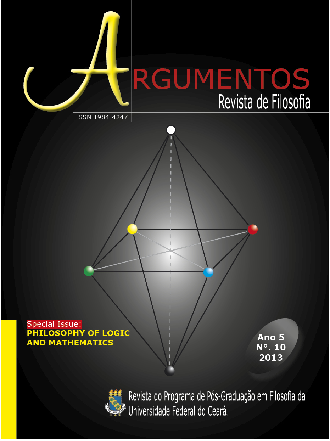The question of the possibility of freedom in the critique of pure reason: an interpretation of B 560 and B 586
Keywords:
Transcendental Freedom. Logical possibility. Real possibility. Third Antinomy.Abstract
It is undeniable that the passages B 560 and B 586 from The Critique of Pure Reason are apparently paradoxical. That is because, although Kant has affirmed there being a possibility of freedom on the solution of the third antinomy (B560), in apparent contradiction to this result, he claims, on a passage from the ninth section of the second chapter in the second book of Transcendental Dialect, not even having had the problem of demonstrating the possibility of that concept. This problem, correlated to the difficulty of making those passages compatible is the motive for the engendering of this paper. Therefore, this work aims to explain why the passages mentioned above are not contradictory. They are not, so far the meaning of the term ‘possibility’ employed on the passages is ambiguous, that is, it conveys more than one meaning. Distinguishing the meaning of the concepts of logic and real possibility present in these two passages, one can not only solve this problem, but enable a systemic harmony between the first and its second major criticism that would present the analysis of the same rationality, but in its practical that the possibility of freedom was dependent.Downloads
Published
Issue
Section
License
Argumentos magazine is licensed under an International Creative Commons Attribution License.
The Magazine uses CC BY inclusion
1) The authors retain the copyright granted to the magazine or the right to initial publication, with the work regularly licensed under the Creative Commons Attribution, which allows the sharing of the work with acknowledgment of authorship and initial publication in this magazine.
2) The authors are authorized to contract additional applicable contracts, for non-exclusive distribution of the version of the work published in this journal (for example, publication in the institutional repository or as a chapter of the book), recognition of authorship and initial publication in this journal.
3) Authors are authorized and encourage to publish and distribute their work online (for example, in institutional repositories or on their personal pages) at any time before or during the editorial process, as they can generate productive changes, as well as increase the impact and reference of published work.




.jpg)










._._3.png)
1.jpg)
._._._.png)
